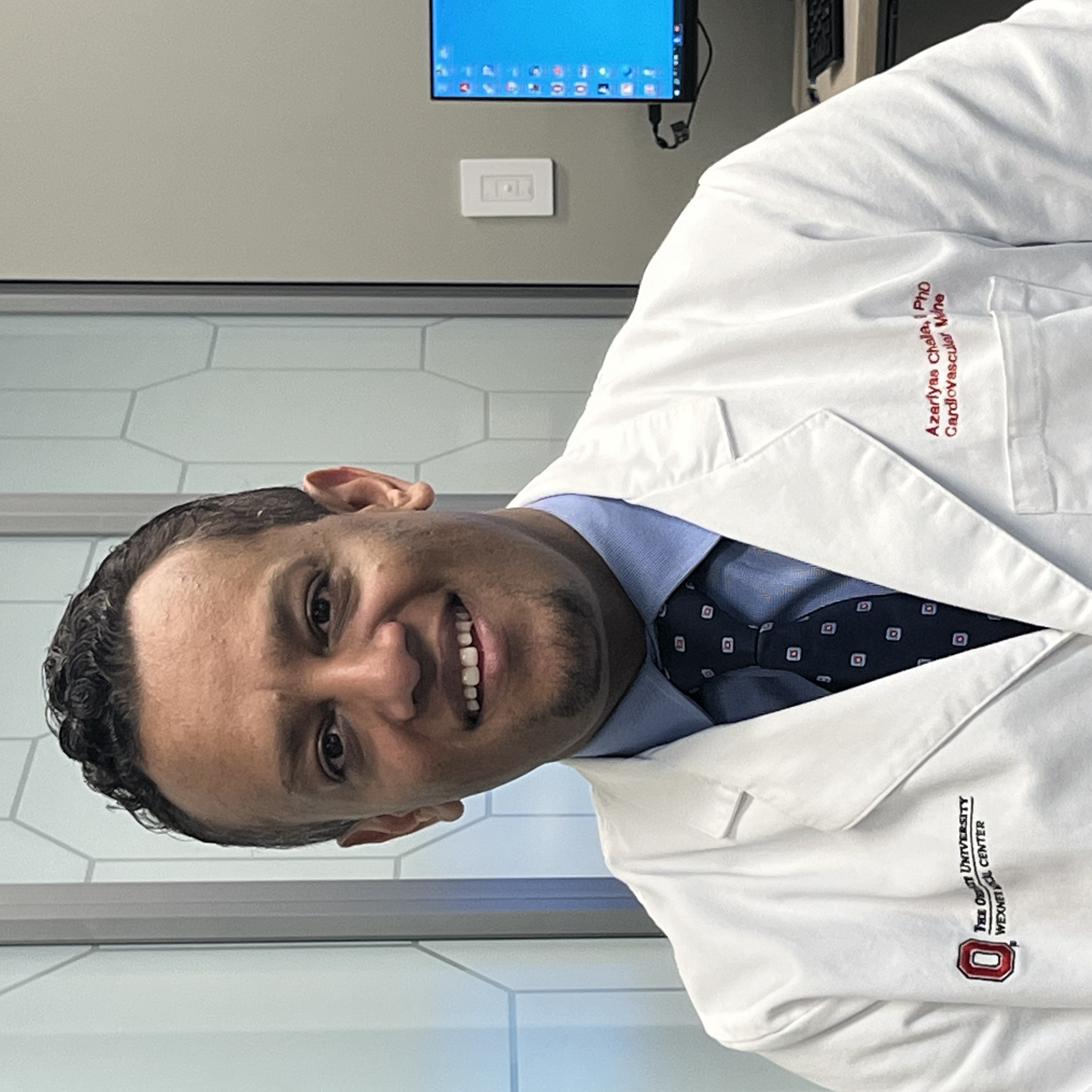I am Azariyas A Challa, a non-invasive cardiologist and assistant professor in the division of cardiovascular medicine at the University of Louisville. I obtained my MD from the University of Gondar, Ethiopia, in 2004. I then worked as a lecturer of epidemiology and research methodology at Mekelle University, Ethiopia, teaching medical and health science students. As a faculty member at Mekelle University, I served as the director of the community-based training program, a university-wide position coordinating the training of undergraduate students in community-based epidemiological surveys. During this time, I coauthored two books: a lecture note on principles and concepts of epidemiology for health science students and a manual on the investigation of epidemic-prone diseases in Ethiopia. In 2007, I joined the PhD program in biomedical sciences at Florida State University. During my PhD, using basic and advanced molecular biology techniques, I characterized a complex interaction between vimentin, LARP6 (an RNA-binding protein), and collagen mRNAs in cardiac fibroblasts to conclude that the interaction of collagen mRNAs with vimentin filaments via LARP6 is needed for the stability of the mRNAs. This work is published in Mol Cell Biol. 2011; 31, 18: 3773–3789, and helped me receive the Randolph Rill Outstanding Graduate Student Award by the Department of Biomedical Sciences at Florida State University. The article has been cited more than 195 times to date. Furthermore, through a pre-doctoral AHA research grant, I investigated whether targeting vimentin filaments prevents the development of myocardial fibrosis remodeling in a mouse model of adverse cardiac remodeling. After completing PhD training, I received postdoctoral training in molecular imaging of cardiovascular disease in the Division of Cardiology at Yale University. This training expanded my expertise in basic science research by exposing me to tools for the assessment of mouse cardiac physiology and hemodynamics, in vivo imaging of small animals, tissue microscopic histopathology, and basic small animal cardiovascular surgeries. I then joined an internal medicine residency at the University of Pittsburgh Medical Center (UPMC) under the International Scholars’ Track. This highly competitive program prepares residents for an academic career as physician scientists by creating a forum of mentorship with established researchers. After completing the internal medicine residency in 2016, I then worked as an academic hospitalist and attending physician at UPMC-McKeesport Hospital until I joined the cardiology fellowship at Ohio State University. In June 2024, I completed a clinical fellowship in cardiovascular medicine and a 2-year T32 cardiometabolic training program. For two years, in the laboratory of Dr. Lewandowski, I received a hands-on exposure to a wide variety of methodologies, including assessment of cardiac metabolic flux, and energetics, myocardial lipid analysis, ex vivo and in vivo evaluation of cardiac function and hemodynamics using animal models of heart failure. Consistent with my long-term research goal of leveraging the understanding of molecular mechanisms of altered cardiac metabolism in cardiovascular pathologies for the discovery of novel therapies, as my first project in the laboratory of Dr. Lewandowski I investigated the effect of activation of brown adipose tissue (BAT) on cardiac metabolic remodeling in response to pathological stress. We found that UCP1-dependent BAT activation attenuated early hypertrophic and profibrotic signaling and accelerated cardiac metabolic remodeling in response to pathological stress from pressure overload. This provided proof of a principle at a preclinical level that targeting metabolic remodeling via a novel approach involving interorgan communication could be a potential avenue for preventing adverse cardiac remodeling associated with pathological cardiac hypertrophy and heart failure. The result of the above work is published in FASEB J. 2024 Jun 15;38(11):e23709. PMID: 38809700. In my second project in the lab of Dr. Lewandowski, I elucidated the effect of CD36-dependent transendothelial transport of long-chain fatty acids (LCFA) on the rate of uptake of LCFAs, on the metabolic fate of LCFAs, and the adaptive response of the heart to pathological stress. We found that mice with depletion of CD36 in ECs (EC Cd36-/-), compared to control littermates, exhibited exaggerated cardiac hypertrophy, pronounced LV systolic and diastolic dysfunction in response to transverse aortic constriction (TAC). Dynamic mode 13C NMR revealed delayed LCFA uptake kinetics in sham and TAC EC-Cd36-/- hearts perfused with 13C-labeled LCFAs. Mitochondrial oxidation of LCFAs, and cardiac energy potential were markedly reduced in EC Cd36-/- TAC hearts. Interestingly, the lack of EC-CD36 during TAC increased the trafficking of 13C LCFA to the lipotoxic C16 ceramide in EC-Cd36-/- hearts. We concluded that EC CD36-dependent transendothelial transport is critical for the delivery of LCFA during pathological stress. The manuscript from this work is currently under review. For my research accomplishments during my cardiovascular fellowship, I was honored to be the recipient of the 2024 Charles A. Bush, MD Award in Cardiovascular Research, OSUWMC, Columbus, OH. Currently at the University of Louisville, I am engaged in translational and clinical research on the cardiovascular complications of diabetes and obesity. I was able to complete two first-author articles (one in Nat Rev Endocrinol. 2025 May;21(5):269; PMID: 39972151, and another in press at JACC Basic Transl Sci), and several are in preparation for submission. Clinically, I treat patients with cardiovascular disease both in the inpatient and outpatient settings. In the clinic, I focus on preventative cardiology with a niche of preventing and treating cardiovascular complications of diabetes and obesity. My long-term goal is to lead a research program investigating the mechanisms by which altered endothelial and cardiac metabolism lead to cardiovascular diseases in diabetes and obesity, and harnessing these discoveries for the development of novel therapies for the prevention and treatment of cardiovascular complications of these metabolic diseases. Aligned with my research focus, I plan to run a cardiometabolic clinic where I, in collaboration with endocrinology, provide consultative services to patients with diabetes and obesity who are at increased risk of cardiovascular complications to prevent, identify, and treat the disease early.











